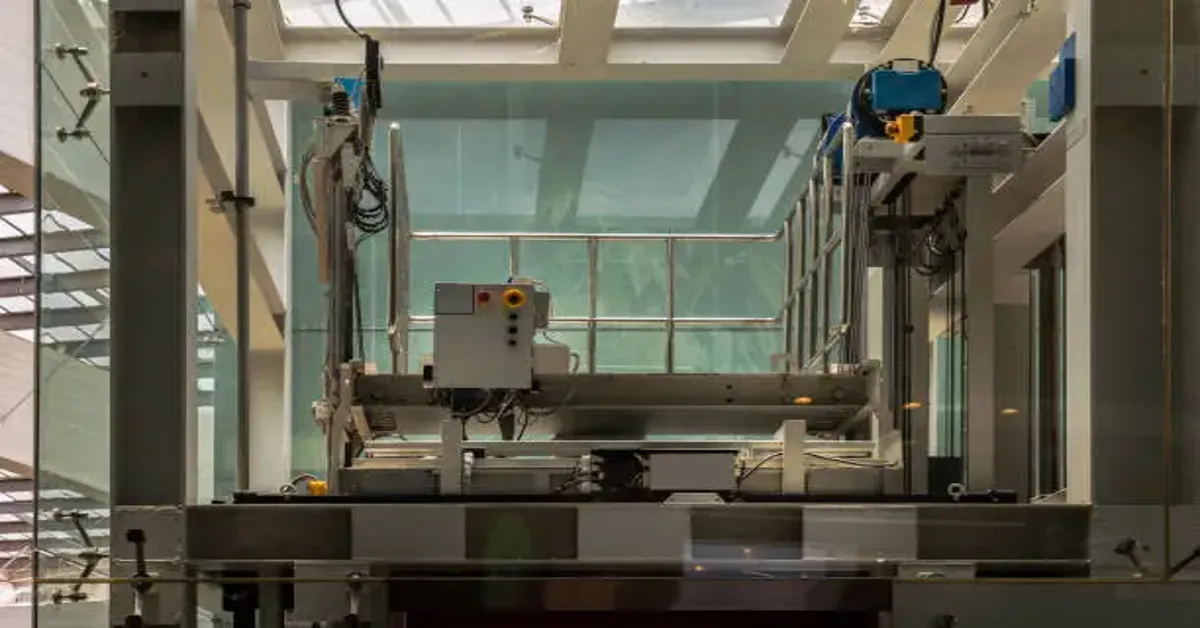The elevator is the most used equipment in any facility that operates across multiple levels. But why is it one of the last to be upgraded? Staff lose a lot of time while waiting for the lift. More time is taken while making extra trips because of less capacity. That time adds up, and so does the energy wasted by inefficient systems.
Modern elevators have come a long way. Some models use regenerative drives that convert downward motion into usable energy. Others have smart controls that reduce unnecessary trips. The goal is simple: move more people and goods, using less energy, and without delay. That’s how access becomes part of a greener operation.
Why Sectional Doors Play a Bigger Role Than You Think
You might not think of doors as a major source of energy waste, but in reality, outdated sectional doors can have a huge impact. Every time they open slowly, you’re losing air and making your HVAC system work overtime.
Newer doors are built differently. They open faster and are better insulated. That means indoor temperatures stay stable and equipment doesn’t overheat which makes the staff more comfortable. For temperature-sensitive spaces like cold storage or food handling areas, the impact is even more noticeable.
You should choose doors that suit your workflow, layout, and energy goals. Because the right door does more than open and close. It protects your product, supports your team, and saves power while doing it.
Small Choices That Make Big Environmental Gains
Some businesses who replace cheaper, lightweight panels three times in five years, when one well-built steel option would’ve lasted a decade.
Durable materials reduce waste. Rust-resistant finishes mean fewer replacements. These decisions might seem small, but they cut down on disposal costs and lost hours.
While opting for a change, look at what’s likely to break and how easy it is to fix. Also, if it can be reused or recycled later in time. Sustainability starts at the specification stage—not after the installation.
Letting Flow Reduce the Footprint
Every detour or delay adds to energy waste. Good sectional doors help keep everything moving smoothly—from people walking the floor to trolleys moving parts.
Owners should understand how their teams move and where bottlenecks form. Sometimes, a small layout shift or a better line of sight is all it takes to cut down on traffic jams and reduce equipment wear.
Always choose automated doors that respond to movement—not timers. That way, they open only when needed and stay closed when they’re not.
Smart Systems That Know When to Act
Sustainability is about making smarter choices. Today’s connected systems can track how often your doors open, how much power your lift uses, and where time gets lost.
Say your dock door opens 60 times a day. A smart sensor system can make sure it only opens fully when needed, reducing exposure to outside air. Or maybe your elevator runs empty 20% of the time. Smarter dispatch logic can change that. These kinds of efficiencies might not grab headlines, but they improve your energy usage daily.
Make Use of What You Already Have
Many facilities assume sustainability means big spending, but it is not. It starts from what you have. Renovating is always a smart decision that way you will attain lower-cost and meet the green goals. A team should be dedicated to assess what’s working, what can be fixed, and where a little investment will make the biggest impact. No need to start from zero.
Protecting the Edges with Purpose
When it comes to reducing waste, avoiding damage is key. We’ve seen warehouses replace the same door frame three times in a year because of careless forklift turns. That’s material waste, budget waste, and time lost.
Simple bollards placed in high-risk areas can make a huge difference. When used well, they protect corners, guide vehicle paths, and keep people safe. New bollards made of recycled materials or flexible rubber cores do the job without hurting equipment.
And they’re not just for big impacts. Visual cues from bright bollards help drivers steer better and avoid clipping infrastructure. The result? Fewer repairs, lower costs, and safer workspaces. All with a one-time install.
Thinking Ahead, Not Just for Today
A truly sustainable facility isn’t just greener—it’s smarter about what it installs today to handle tomorrow. Maybe your volumes are steady now, but what about in two years? Maybe your processes are manual today, but automation is around the corner.
Use modular doors that can be widened, lifts that can be updated with new tech, and layouts that support flexible workflows. These changes are better for the future and show clients and regulators that your business is planning with care.
Conclusion
Sustainability does not always mean big changes. It’s about looking at how we move things every day and making sure each step supports your environmental goals. At the end of the day, better access isn’t just about function. It’s about helping your business work smarter, waste less, and operate with confidence.

